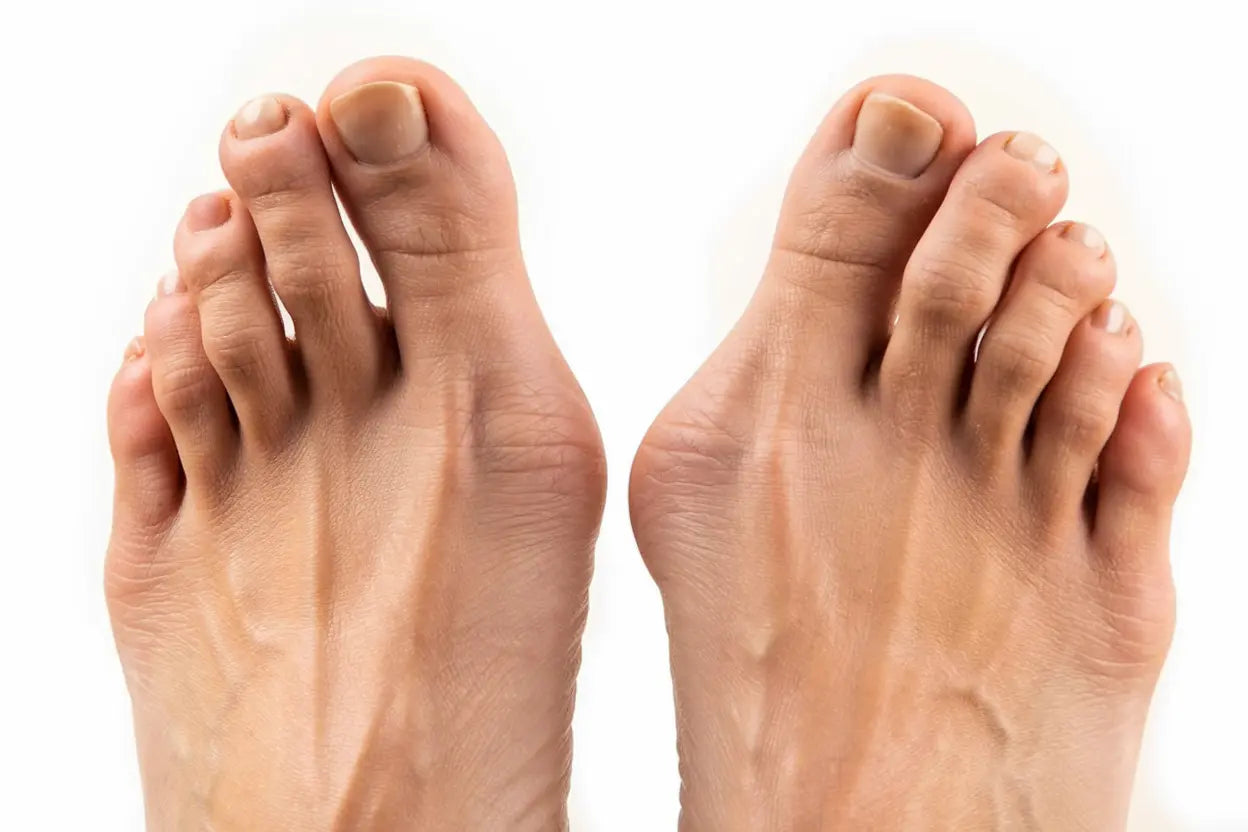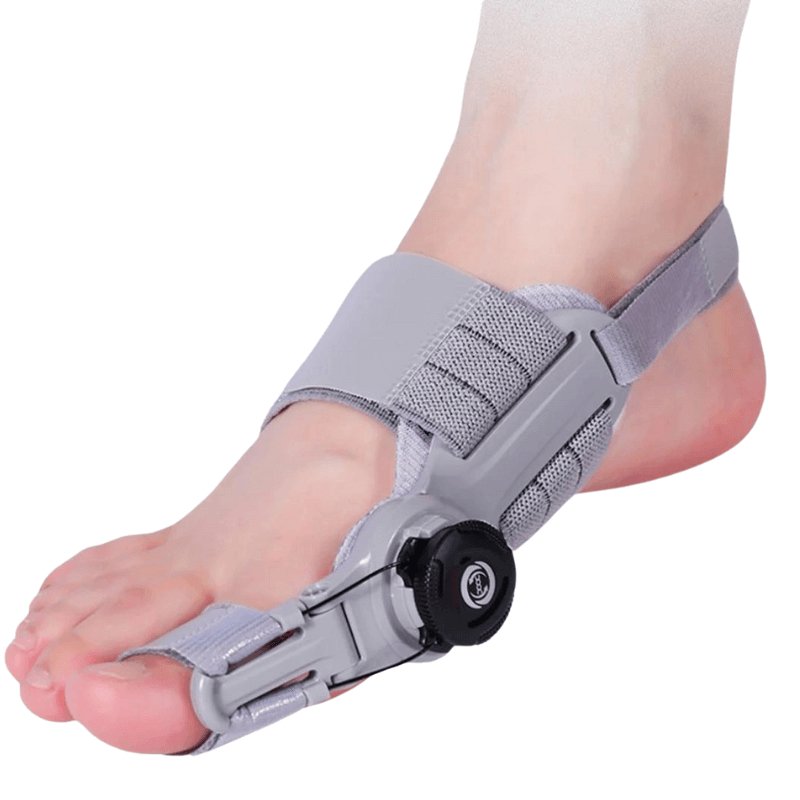Hallux Valgus: Symptoms, Causes, and Treatment

Hallux valgus, also known as bunion, is a common foot deformity that can cause pain and discomfort. This article reviews the most common symptoms, causes, and treatment options for hallux valgus.
What is Hallux Valgus? – Definition, Symptoms, and Foot Pelott
Hallux valgus is a progressive deformity where the big toe bends inward towards the other toes, creating a bulge on the inside of the foot at the base of the big toe. The condition is characterized by a misaligned big toe that angles towards the inside of the foot and creates a bump (also called pelott) on the inner side of the foot. This bump can become inflamed and cause swelling, especially when it rubs against shoes. Over time, the big toe joint can become increasingly misaligned, affecting the entire forefoot and potentially leading to complications such as hammer toes on the other toes.
Typical Symptoms of Hallux Valgus – From Discomfort to Complications
Common symptoms include:
- Pain and discomfort in the big toe joint, especially when walking or standing
- Visible bump on the inside of the foot
- Redness and swelling around the big toe joint
- Difficulty finding comfortable shoes
- Limited mobility in the big toe
Hallux valgus inflammation is common and can make it difficult to find shoes that do not press on the bump. In more severe cases, even the little toe can be affected, which is called hallux valgus little toe, where the little toe is also pushed towards the center of the foot. Many experience that discomfort worsens over time if left untreated.
Causes Behind Hallux Valgus – Risk Factors and Why the Deformity Develops
Several factors can contribute to the development of hallux valgus:
- Genetic predisposition and heredity
- The use of tight or high-heeled shoes with a narrower forefoot
- The structure and biomechanics of the foot, especially a weakened arch
- Arthritis or inflammatory joint diseases
- Injuries to the foot
The cause of hallux valgus can often be traced back to a combination of genetic factors and environmental influences. Women are affected more often than men, partly due to differences in shoe choices. When the big toe is pressed against other toes for an extended period, it gradually begins to change shape, leading to the characteristic deformity.
Diagnosis and Treatment – From Healthcare Contact to Possible Hallux Valgus Surgery
| Diagnosmetod | Behandlingsalternativ | Fördelar med TåKomforten™ |
|---|---|---|
| Fysisk undersökning | Anpassade skor och inlägg | Avancerad justeringsbehandling |
| Röntgen | Smärtlindrande läkemedel | Gradvis lindring av inflammation |
| Gånganalys | Fysioterapi och övningar | Icke-invasivt alternativ |
| MRI vid behov | Kirurgi i svåra fall | Kan användas dagligen för kontinuerlig behandling |

How TåKomforten™ Can Help – Support to Relieve Hallux and Prevent Issues
TåKomforten™ from Komforten offers several benefits for individuals with hallux valgus:
- Applies advanced adjustment treatment to gradually restore the position of the big toe
- Helps relieve pain and inflammation in the big toe joint
- Non-invasive option that can complement other treatment methods
- Can be used daily for continuous treatment
- Designed to fit all foot sizes and can be adjusted for both right and left feet
For many, hallux valgus protection and hallux valgus support like TåKomforten™ work excellently to reduce pressure on the painful bump and provide support to the big toe. These aids can help slow down the progression of the condition and alleviate discomfort in daily life.
Buy nowConclusion – Summary and Tips for Seeking Care and Preventing Hallux Valgus
Hallux valgus is a progressive deformity that can cause significant pain and discomfort if left untreated. By combining conservative treatment methods with the use of supportive aids like TåKomforten™, many individuals can effectively manage their symptoms and potentially prevent further progression of the deformity. It is important to consult a doctor or foot specialist for an accurate diagnosis and individualized treatment plan.
Frequently Asked Questions (FAQ) – Related Information on Diagnosis, Treatment, and Hallux Rigidus
Can hallux valgus be treated without surgery?
While hallux valgus cannot be completely "cured" without surgery, many individuals can effectively manage the symptoms and slow the progression with conservative methods such as TåKomforten™.
How long should I use TåKomforten™ daily?
It is recommended to use TåKomforten™ for 30 minutes daily, but consult with a foot specialist for personalized recommendations.
Can hallux valgus cause pain in other parts of the foot?
Yes, untreated hallux valgus can lead to altered gait and loading, which can cause pain in other parts of the foot, the ankle, and even the knee.
Is surgery always necessary for hallux valgus?
No, surgery is usually only considered in severe cases where conservative treatment has not provided sufficient relief.
Can I prevent hallux valgus?
While some risk factors cannot be influenced, wearing comfortable shoes with enough room for the toes and regular foot care can help prevent or slow the development of hallux valgus.
